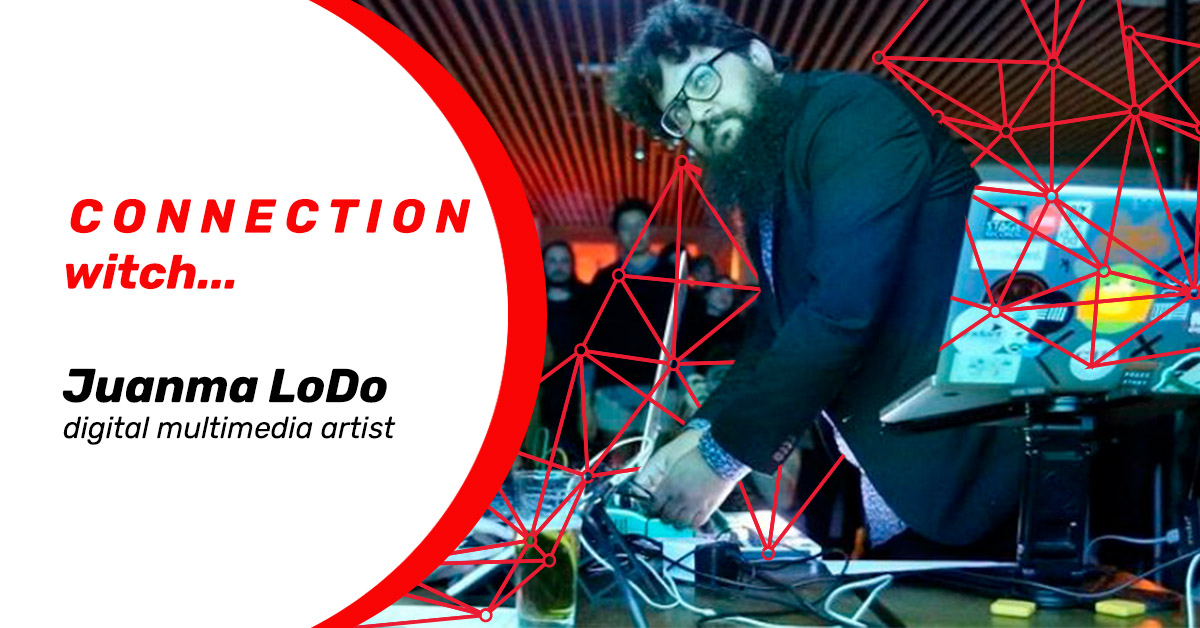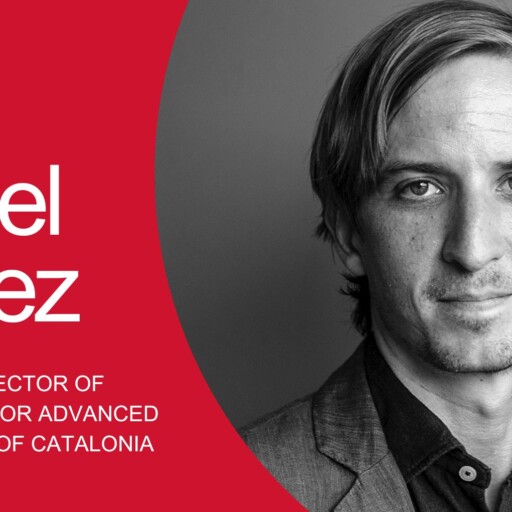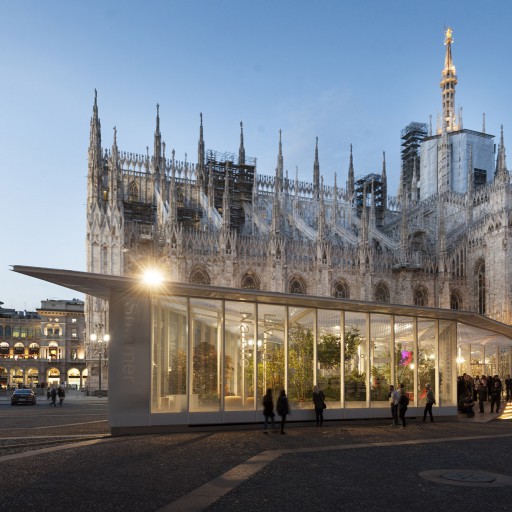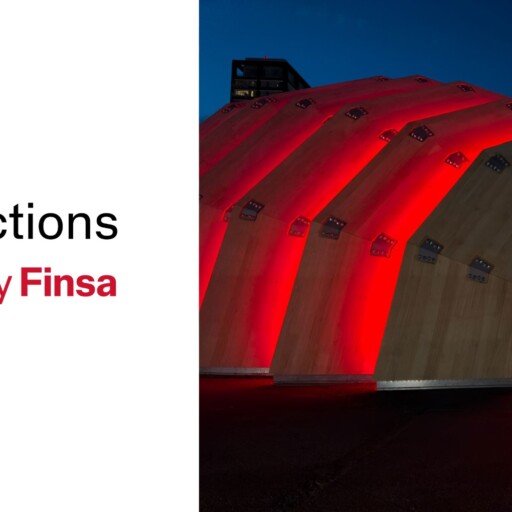Juanma LoDo’s business card features a meme of Julio Iglesias, with text that reads “Juanma LoDo can do it all. And you know it”. That’s no exaggeration. Born in O Porriño in 1983 – “I can see the value in [my hometown’s] industrial beauty. It’s the Detroit of Galicia”-, you’re just as likely to find this videoartist and multimedia creator filming a documentary as rehearsing some audiovisual content, creating 3D projects, setting up an installation, producing a festival, making electronic music, hunting down fashion trends in the street armed with his camera, or teaching. In summary, he is always preparing for his next performance.
“I have the word ‘no’ tattooed on my left wrist, but I always say yes,” LoDo confesses. Guided by his innate curiosity, he takes on many different types of projects, often under a pseudonym and in collaboration with other artists, but always with a desire to absorb knowledge and tell a story. “I find it very difficult to repeat myself. That’s why I use loopers,” he says.
For this CONNECTION WITH…, we chatted to him so we could get to know him better and understand the secrets behind his multidisciplinary work.

You have a business card, but it’s still quite difficult to explain who Juanma LoDo is and what he does.
For those of us with an interest in the digital, in art, it’s even more complicated. Even explaining it to our families is hard. My family finds it hard to reconcile their knowledge with what their son does. Luckily I can repost my Instagram posts to my Facebook page, because my parents have Facebook, so they don’t think what I do is that weird. I even google myself sometimes, which isn’t such a great idea, but I need to do to know what it is that I actually do. Or I look at the photo gallery on my phone and I think “Wow, this year I was doing this and I was with that person doing something else”. My work is a reflection of my life, it’s a little chaotic.
Have you been artistic since you were a kid? What attracted you to the audio-visual medium?
I have always liked music and then I became a fan of computers. My parents thought I was going to go crazy listening to the same beat all the time. Then I moved to Ferrol to study Industrial Design. I lived with a group of friends there who shared my interest in new jargon and new technologies. We played with video cameras, synthesisers and more.
So, then you got to Portugal and the Escola Superior Gallaecia in Vila Nova de Cerveira where you studied multimedia and the arts.
It was a small school, so it was easy to get a lot out of everything that we did. While people were talking about the Bologna Process, we were already having classes with a maximum of ten people, and it was very easy to gain knowledge in other ways. Everything was very practical. Vila Nova is also known for its art biennale, its art installations, and the technical resources, which were all at our disposal. We were really lucky in that respect. I had teachers who were like colleagues to me, and colleagues who were like teachers. It was a Bauhaus situation. Portugal is also where I started making visuals for parties, building lots of projection surfaces for video mapping, modules for DJ stage sets, something that is seen a lot now at the big festivals. I started out like that, with lots of small things at different venues.
Ver esta publicación en Instagram
What is a videoartist? What does this type of artist do?
The truth is we work in a field that is difficult to explain. You have to see it to understand it. How do you explain why something smells good? But I’m going to try anyway. We take images, clips from videos, and sometimes just lines or dots, that react to the sound and we play with them to build something. It’s just like a language. A visual reference might be Kandinsky’s paintings or those images that change when you move them around, or synaesthesia, seeing music through colours and shapes. This is synchronised with the rhythm of the music, controlling the intensity, and the listener becomes just another instrument.
You combine lots of different formats and materials. How would you describe your technique?
Well, from connecting video cameras to my computer and taking those images, or those from webcams, to using a midi controller, which is just a keypad with buttons, wheels, and sliders that activate or deactivate a note, key changes, tempo, or intensity, and give you better control over the software you’re using. It’s not just clicking to change a colour or make a shape move. I use both hands and I mix everything, fusing the colours, increasing or decreasing the size of the shapes, and all to the rhythm of the music, or an interpretation of it, because sometimes the rhythm is 1, 2, 3, 4 and you are just playing with the first and the third beat. It all depends on the emotions, the feeling. I work more in that space. I also like to create videos with my phone that act as raw material. I have a video camera and a photo camera that can also make videos using different lenses, and I add [lenses], filters, or mirrors in front of the camera to distort the image and I use those videos, too.
Has your phone become an important tool in your work?
I use it a lot. It’s very easy to create images and generate different effects. Sometimes, when it’s in my pocket, I accidentally record videos and then I use those, too. It’s much easier to understand now thanks to Instagram filters. Sometimes it’s interesting to explore the effects and filters in apps, like the VHS aesthetic, which is very on trend right now.
The element of improvisation is important, right?
Improvisation and error are great raw materials for me. Sometimes I turn a video into a sound file, which sounds like an old router, like white noise. If you add sound effects and break up the structure of the video, when you turn it back into a video it has the effect of a DVD not working properly and the pixels freeze. Those effects are incredible to me, they have that error aesthetic. We are always being told that everything has to be perfect, and it’s cool that, in art, you can play with other things and derive beauty from them, from errors, which I really like. And improvisation doesn’t mean just doing any old thing. It’s about rehearsing a lot, but not repeating what you rehearse. It’s not a trance. Or maybe it is. Improvisation is letting yourself get carried away to a place you did not expect to go to. There’s beauty in errors.
Ver esta publicación en Instagram
Are there any recurring themes in your work?
I’m eclectic and I really like to collaborate, I really enjoy it. I find it really hard to repeat myself, which is why I use loopers. I could never be a slave to success. I think that the freedom I get from doing what I like, from getting a call and diving into a new project, when someone says ‘let’s play’, from exploring a certain field, that’s what I like. That’s what makes me eclectic.
How do you jump so easily between O Porriño and the Pompidou?
I’ve never felt that I live in the ‘deep’ Galicia that you sometimes hear about. You can live in the middle of a city that has a lot of culture and still not experience any of it. We are lucky that we are so connected in this day and age. I’m Galician, from O Porriño, but I always say that I live in a bigger city that remains undefined. My house is 100 kilometres north of where I live and 100 kilometres south, too. From Braga and Porto to A Coruña and Santiago, I enjoy the culture that can be found throughout the region.
One of your artistic projects is called Hedonistas (‘Hedonists’). Is that your attitude to life and art, the search for pleasure?.
Yes. Hedonistas is the project that I started with and I’m still working on it because, one thing about be is that I never close off my projects. I think that my way of approaching art, with all its different facets, is always with a name or a project. So Hedonistas is a project, Lunatic Boy is another that I used to build musical pieces, Epicuro AV is another…I also have one called Touch&Play.
The video market is expanding and becoming more and more accepted by the general public. Do you think that’s because we are now more used to that kind of language or because it’s been accepted as an artistic format, like what happened with photography?
Video has gone from being something that tried to construct a reality to something that narrates new ideas and, from an artistic point of view, it has to express emotions, sometimes in an abstract way and sometimes as a discourse, a narrative, and you can do that by creating 3D spaces. In the end, it’s a way to communicate, and enough time has passed for people to realise that these are works of art that are sometimes an installation and sometimes just a bit of fun. When it comes to festivals, even though you use art, it’s not that artistic. I don’t know if I’m explaining myself well…[the works of art] are contingent on a DJ, or an architectural piece in an ephemeral space that’s only going to be around for a short time. But when you create an installation you’re telling a story, even though it might be called ‘untitled’.
Ver esta publicación en Instagram
NFTs (non-fungible tokens) have also landed in the videoart world. What do you think of cryptoart?
I know people that use it, but for me it’s the commercial side of art. The aim of NFTs has nothing to do with creation. Rather, it’s all about collection. And I get it, I have friends that sell them, but I don’t. I’m lucky enough to be an outsider and earn my living through my creativity.
What’s the strangest, most unusual thing you’ve ever done in your professional life?
People call me to ask for things and I don’t usually say no if it sounds interesting. I’m a nerd and I like that I am, but I don’t think it’s weird. I was in Berlin and a Portuguese friend was looking into a system that used brainwaves to make music. Since he didn’t know anything about music, he asked me to help him and of course I said yes. Three days later we were both at my house connecting sensors to my head to see the waves that were generated when we stimulated the brain by eating chocolate or drinking water. This year I went down an iron mine on the Galician-Asturian border using smoke machines to project and create incredible shapes on carved stone.
I’ve also spent time with an artist who wanted to project rivers onto a burnt forest in Nigrán [in Pontevedra]. We laid out several metres of white fabric and projected [the artist’s] images onto the sheets. I adapted them using the video mapping technique and used the headlights of a car to create a sense of depth. We created a place that looked extra-terrestrial. It didn’t even seem like a rave because there wasn’t any music, just coloured lights and shapes. On another occasion, Antón Reixa called me up to work on one of his installations using a piece by Francisco Leiro on a bed and he wanted to project a video onto the sculpture. It was weird. But I always have a great time and I continue to surprise myself which, for me, is one of the most gratifying things to come out of working in this field. I think I’m really lucky to have that.




